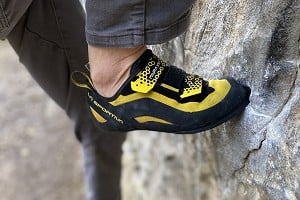
In recent years Scarpa have designed a lot of soft, sensitive shoes; I should know too, as I've either used or reviewed most of them. As such, I was interested to know what the Booster brought to the table, that the Furia Air, Furia S, Drago and Chimera didn't. Choice is obviously a blessing, but it can also be quite confusing. So what is the difference? The short answer is that it's really subtle. We are living in an age when increasingly specialist shoes are being made; in the case of the Booster you're getting a light, sensitive and precise shoe that also provides a little (but not a lot of) support through the toe.
Functionality
Before we begin talking about the functionality it's probably best to contextualise where the Booster fits within the soft/sensitive side of Scarpa's range:
The reason the Booster sits higher up the list is partly a reflection of just how soft the rest of the range is, but also because there is that little bit of support - albeit quite minimalist - in the forefoot. This provides a little edging ability, but understandably not too much as a result of an extremely soft midsole. A shoe for small footholds on vertical limestone, this is not.
So what is it for? The Booster is primarily designed for high-standard bouldering, and is arguably best suited to bouldering at the steeper end of the spectrum. If the angle is steep enough (think European caves and grottos) then it would be perfect for sport climbing too, but back here in the UK, where our angles tend to be a little more gentle, it probably wouldn't be your first choice (unless you have a particularly strong set of toes). Contrary to this, because of its superb, soft and sensitive feel it's a joy to climb in on more friction-based rock types such as sandstone, gritstone and granite. Whilst it wouldn't be my first choice for slabs on more edgy rock types such as slate, on pure friction slabs it climbs impressively well.
Going back to the intro where I refer to differences between shoes becoming more subtle, shoes themselves are also becoming more specific. This is a shoe that actually has - at least in my opinion - the ability to be a little broader in focus than perhaps the Furia Air, Furia S, or the Drago, as it has at least some potential to perform on both friction based rock and more edge based rock types (i..e rhyolite, limestone). However, whether or not this is the case for you largely comes down to the all-essential fit...
Fit
Whilst the Scarpa website suggests that the Booster has a narrow last, I would strongly disagree - this is not a narrow shoe. The only thing that's narrow about it is the heel, but beyond that the rest of the shoe is - if anything - at the wider end of the spectrum, particularly around the forefoot. This shoe is available in sizes from 34-45, and there's no women's/low volume version, so it's bad news for half the population and indeed men with massive feet.
The sizing on the Booster is a little on the small side too. In most shoes in the Scarpa range I am a 41; however, in the Booster I couldn't even foot my fit into a 41 - hence had to go up to a 41.5 to get them to fit. The remarkable thing about the Booster, as with many of the shoes at the softer end of the Scarpa range, is that if they do fit - and you buy them the right size (whereby they're nice and snug, not painful) then they have the ability to give both performance and comfort right out of the box. I think I used the phrase 'rubber sock' in reference to the Furia S, which gives a degree of context, but with the Booster it would be like a rubber sock with a bit more support at the toe.
Due to its synthetic construction it will give a little, but certainly won't stretch, so don't do anything stupid and buy it three sizes too small, because it won't do you any good in the long run!
Forefoot/Toe Box
As suggested above, the Booster's forefoot is realistically towards the medium-wide end of the spectrum - not narrow as suggested on Scarpa's website - although the exact volume can easily be adjusted courtesy of two, sturdy straps. It's covered by a minimalist 1/3rd length 3.5mm Vibram XS Grip 2 sole, which in recent years has become the industry standard for soft, sensitive rubber (and having used it on countless shoes now I struggle to find fault).
On the top side, the Booster features a large, ribbed toe patch. This is pretty much identical to the toe patch featured on the ever-popular Instinct VS and VSR, and has a proven track record. If it ain't broke, don't fix it.
As a final word on the toe box and its fit, it's worth mentioning that its shape is specifically designed so that your toes are pushed up against the front, knuckles up. Whilst this may sound painful on paper, it certainly shouldn't be in reality, as the midsole, rand and tension system work their combined magic (more on that later). Either way, when fitting it's worth bearing this in mind, as they are designed to be worn a little on the small size.
Midsole
Underneath the hood, invisible to the eye, is the midsole, which provides support (for more info on this, take a look at the interview we filmed with one of its designers, Nathan Hoette below). This has a cutaway, in much the same way that the outsole does with its three dots. Whilst this takes away a bit of lateral support, the idea is that it gives back a bit of sensitivity - something that the Booster definitely isn't lacking.
The balance between heel and toe is is achieved courtesy of the PAF system and the DTS tension rand, which make perfect partners - one covering the front end, the other covering the back - with a wraparound design to provide power through the toe, without either rupturing your achilles or turning your toes into agony. Each has a series of holes of varying size, which are designed to reduce weight and increase the flexibilty and sensitivity of the shoe.
Heel
The Booster's heel is an interesting area to discuss, as it seems to have divided people. Narrow in fit, it defintiely hugs the heel and has no issues in staying on; however, what people appear to have taken umbrage with is the orange rib of M50 rubber that runs down its centre. Whilst this is pitched as being softer, hence able to morph around whatever you're intending to heel hook on, it doesn't appear to deliver in realtiy, with a tendency to slip. Given how good the toe box is, and the amount of design that has gone into the various tension systems and rands, the presence of slippery rubber on the heel does seem like something of an oversight. This isn't to say that you can't heel hook, because you can - especially on larger and more obvious ledges. It's smaller, sensitive and more tenuous heel hooks that are the most noticable problem and one where the other softer shoes within the Scarpa range outperform it by a fair margin.
Summary
At £145 the Booster is the most expensive shoe in Scarpa's rock shoe range (with the exception of the highly specialist Maestro Alpine, that comes in at £220). As a result of this, and that differences between it and the others within the range are subtle, it might make people cynical about investing in it; however, what I'd always suggest to such cynics (myself included) is to try them all on and see which one works best for you. Whilst it is subtle, the Booster does provide a degree of edging ability which the Furia Air, Furia S and Drago don't, but with the added benefit of retaining the same degree of sensitivity. The only thing that lets them down is the heel, which does appear to be at the slippier end of the spectrum.
Scarpa say:
The Booster is light, ultra-sensitive shoe bouldering and sport climbing on small edges and smears. An asymmetrical, downturned shape and a one-third length Vibram® XS Grips 2 sole creates a flexible shoe that allows more natural movement through overhanging, thin routes. The DTS rand enhances powerful movements through dynamic problems by concentrating the strength of the foot through an asymmetrical support ribbon; driving energy to the forefoot while the PAF system helps reduce over-compression of the toes and provides a snug fitting heel.
All of this adds up to create an extremely precise climbing shoe ideal for moving with precision over technical and overhanging rock.
The Booster has been made using Vegan friendly materials and glue.
- Sizes: 34-45 (men's sizes only)
- Last: FZC
- Sole: Vibram XS Grip 2 3.5 mm
- Upper: Microfibre
- Vegan Friendly
- Weight: 490g per pair 40
For more info see scarpa.co.uk





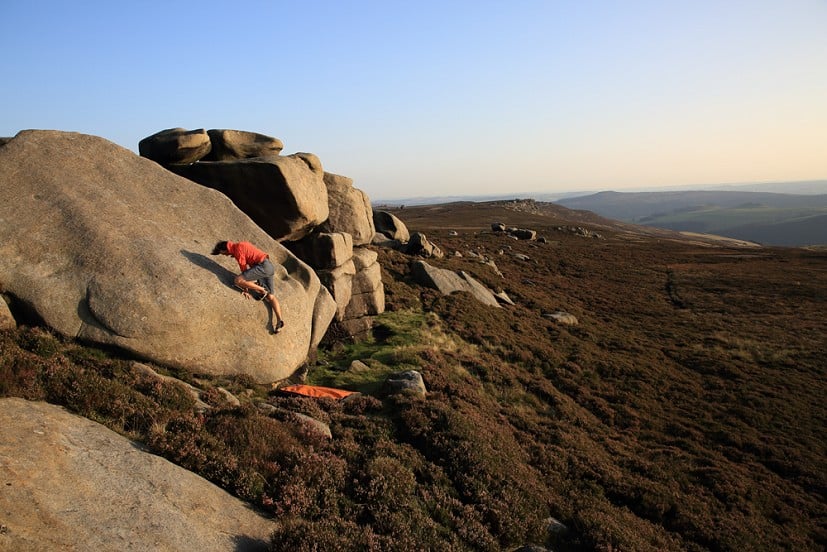
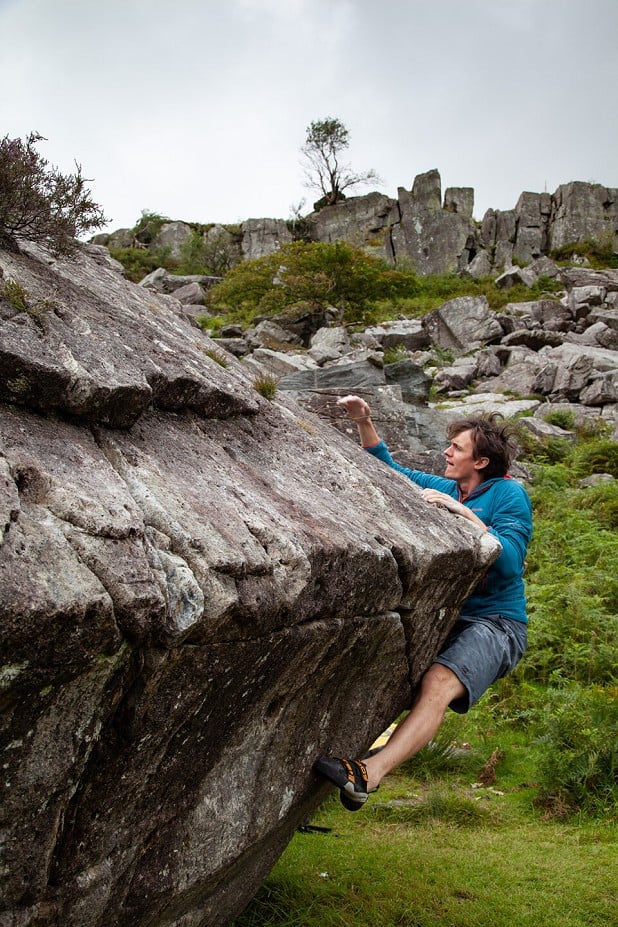

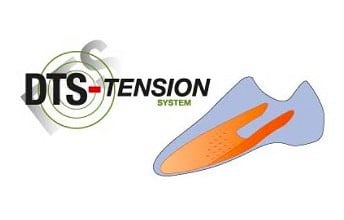
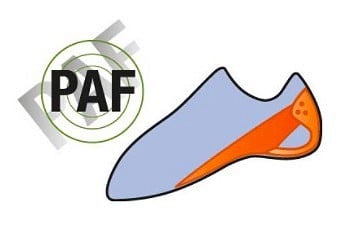
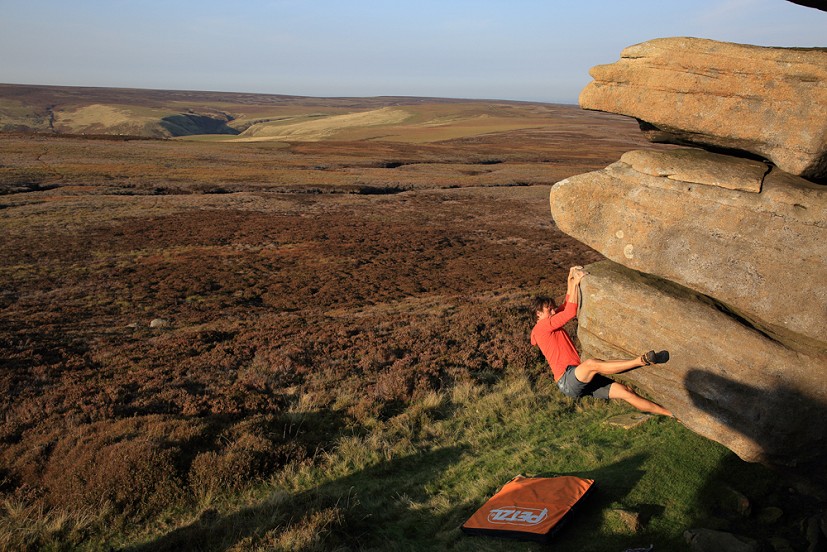
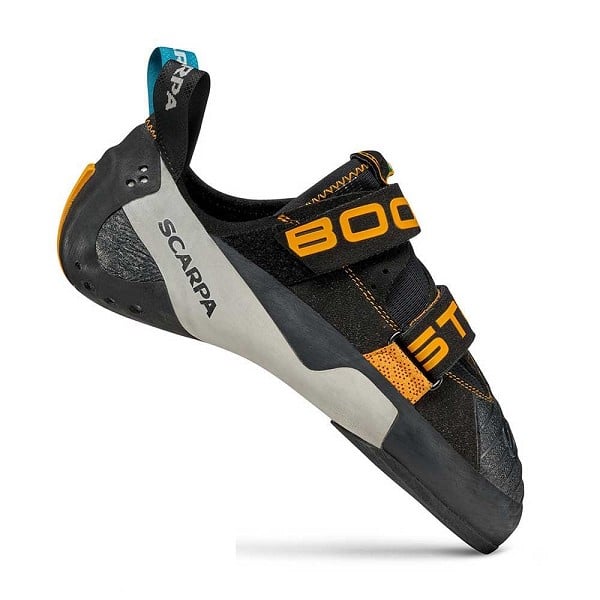
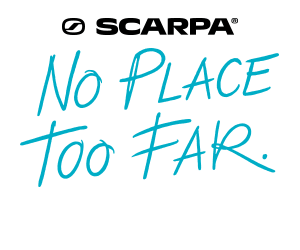
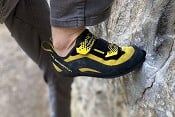
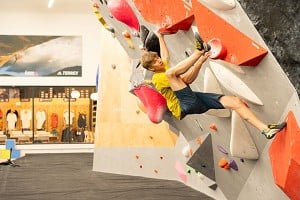
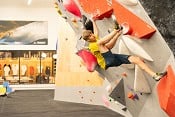


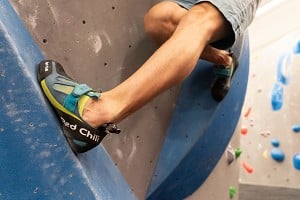
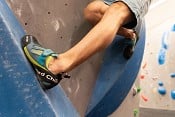
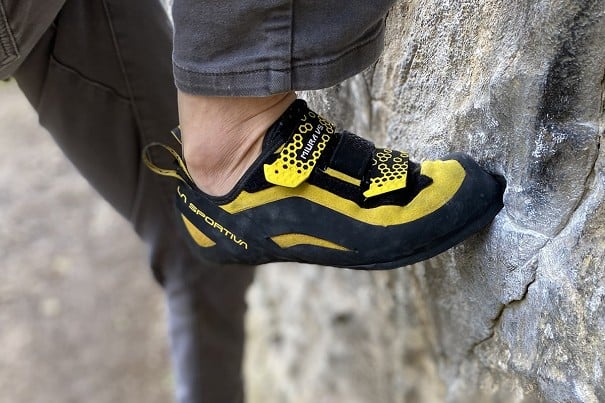
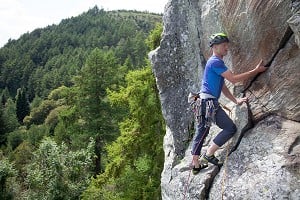
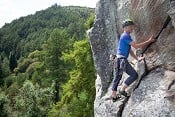


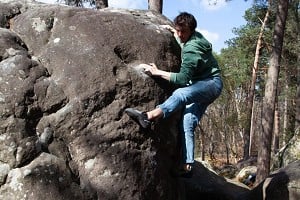
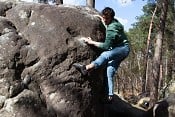

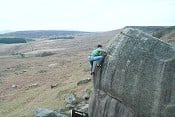
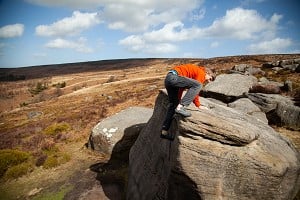

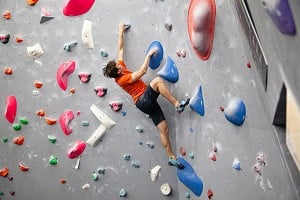

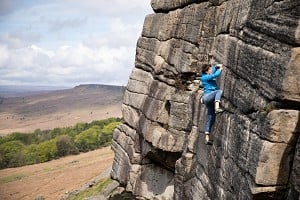



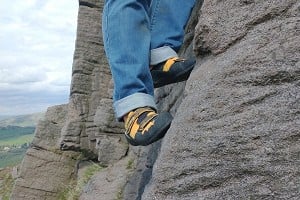
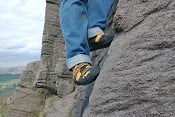

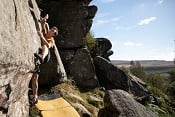

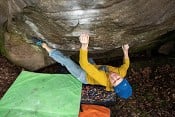
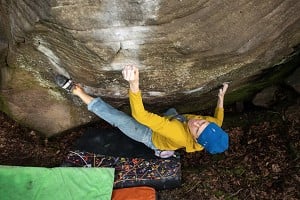
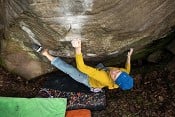
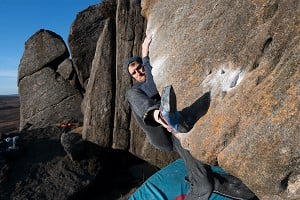
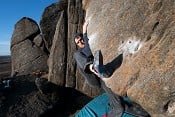
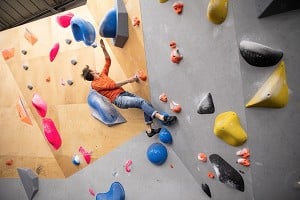

Comments
One significant difference between the Booster and other Scarpa soft shoes is the rand rubber. Normal rand rubber is used here instead of the one piece M50 rand-toe patch. On more vertical climbs this contains the foot much better when pushing down hard on a small edge. On routes where there's a mixture of overhang and face climbing this negates the need of a shoe change mid route. :P
Nice write up but I won't be able to use any of the Scarpa performance shoes as they are to small, the size 45 which is often their biggest size is way too small for me. I take a 42.5/43 in la sportiva.
Why they cant make shoes in similar sizes and range to everyone else is beyond me.
Eh???
They size up the same as sportiva , maybe you have to go up half a euro size or so but not 2 full euro sizes?
I think the heel is fine, on granite anyway which is all I have used them on
However I don't like the massive straps, they stick out a mile and mean you cannot toe hook properly, certainly not like the drago, chimera, furia etc which are all really rather good at that
I would go so far as to say the straps are some kind of vanity project designed purely so they could write boos...ster on them
Eh???
I haven't just made the above up, they don't come up anywhere near the same. There is absolutely no chance at all that I can get my foot in, let alone use a 44 Booster whereas I can wear my 43 skwamas indefinitely. Ive tried, and was rather disappointed.